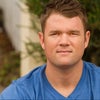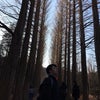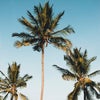El Capitan is a 3,000-foot (910 m) vertical rock formation in Yosemite National Park, located on the north side of Yosemite Valley, near its western end. The granite monolith is one of the world's favorite challenges for rock climbers.
The formation was named "El Capitan" by the Mariposa Battalion when it explored the valley in 1851. El Capitan ("the captain", "the chief") was taken to be a loose Spanish translation of the local Native American name for the cliff, variously transcribed as "To-to-kon oo-lah" or "To-tock-ah-noo-lah". It is unclear if the Native American name referred to a specific Tribal chief, or simply meant "the chief" or "rock chief". In modern times, the formation's name is often contracted to "El Cap", especially among rock climbers.
The top of El Capitan can be reached by hiking out of Yosemite Valley on the trail next to Yosemite Falls, then proceeding west. For climbers, the challenge is to climb up the sheer granite face; there are dozens of named climbing routes, all of them long and difficult.
El Capitan is composed almost entirely of El Capitan Granite, a pale, coarse-grained granite emplaced approximately 100 mya (million years ago). In addition to El Capitan, this granite forms most of the rock features of the western portions of Yosemite Valley. A separate intrusion of igneous rock, the Taft Granite, forms the uppermost portions of the cliff face.
A third igneous rock, diorite, is present as dark-veined intrusions through both kinds of granite, especially prominent in the area known as the North America Wall.
Along with most of the other rock formations of Yosemite Valley, El Capitan was carved by glacial action. Several periods of glaciation have occurred in the Sierra Nevada, but the Sherwin Glaciation, which lasted from approximately 1.3 mya to 1 mya, is considered to be responsible for the majority of the sculpting. The El Capitan Granite is relatively free of joints, and as a result the glacial ice did not erode the rock face as much as other, more jointed, rocks nearby.
.]]
Once considered impossible to climb, El Capitan is now the standard for big-wall climbing. "El Cap" has two main faces, the Southwest (on the left when looking directly at the wall) and the Southeast. Between the two faces juts a massive prow. While today there are numerous established routes on both faces, the most popular and historically famous route is The Nose, which follows the massive prow.
The Nose was first climbed in 1958 by Warren Harding, Wayne Merry and George Whitmore in 47 days using "siege" tactics: climbing in an expedition style using fixed ropes along the length of the route, linking established camps along the way. The fixed manila ropes allowed the climbers to ascend and descend from the ground up throughout the 18 month project, although they presented unique levels of danger as well, sometimes breaking due to the long exposure to cold temperatures. The climbing team relied heavily on aid climbing, using rope, pitons and expansion bolts to make it to the summit. The second ascent of The Nose was in 1960 by Royal Robbins, Joe Fitschen, Chuck Pratt and Tom Frost, who took seven days in the first continuous climb of the route without siege tactics. The first solo climb of "The Nose" was done by Tom Bauman in 1969. The first ascent of The Nose in one day was accomplished in 1975 by John Long, Jim Bridwell and Billy Westbay. Today The Nose attracts climbers of various experience and ability levels, and with a success rate of around 60%, typically takes fit climbers 4–5 days of full climbing.
's 1899 photograph of El Capitan.]]
Efforts during the 1960s and 1970s explored the other faces of "El Cap", and many of the early routes are still popular today. Among the early classics are Salathe Wall (1961, Royal Robbins, Chuck Pratt and Tom Frost) on the southwest face, and the North America Wall (1964, Royal Robbins, Yvon Chouinard, Chuck Pratt and Tom Frost) on the southeast face. Also climbed in the 1960s are routes such as: Dihedral Wall (1962, Ed Cooper, Jim Baldwin and Glen Denny); West Buttress (1963, Layton Kor and Steve Roper); and Muir Wall (1965, Chouinard and TM Herbert). Later ascents include: Wall of the Early Morning Light (1970, Warren Harding and Dean Caldwell); Zodiac (1972, Charlie Porter (solo)); The Shield (1972, Porter and Gary Bocarde); Mescalito (1973, Porter, Steve Sutton, Hugh Burton and C. Nelson); Pacific Ocean Wall (1975, Jim Bridwell, Billy Westbay, Jay Fiske and Fred East); Sea of Dreams (1978, Bridwell, Dale Bard and Dave Diegelman); and Jolly Roger (1979, Charles Cole and Steve Grossman). Today there are over 70 routes on "El Cap" of various difficulties and danger levels. Indeed new routes continue to go up, usually consisting of additions to, or links between, pre-existing routes.
As it became clear that any face could be conquered with sufficient perseverance and bolt-hole drilling, some climbers began searching for El Cap routes that could be climbed either free or with minimal aid. The "West Face" route was free climbed in 1979 by Ray Jardine and Bill Price; but despite numerous efforts by Jardine and others, the Nose resisted free attempts for another fourteen years.
The first free ascent of a main El Cap route, though, was not The Nose, but Salathe Wall. Todd Skinner and Paul Piana made the first free ascent over 9 days in 1988, after 30 days of working the route (graded 5.13b by the Yosemite Decimal System).
The Nose was the second major route to be freeclimbed. Two pitches on The Nose blocked efforts to free the route: the "Great Roof" graded 5.13c and "Changing Corners" graded 5.14a/b. In 1993, Lynn Hill came close to freeing The Nose, making it past the Great Roof and up to Camp VI without falling, stopped only on Changing Corners by a piton jammed in a critical finger hold. After removing the piton she re-climbed the route from the ground. After 4 days of climbing, Hill reached the summit, making her the first person to free climb the Nose. A year later, Hill returned to free climb The Nose in a day, this time reaching the summit in just 23 hours and setting a new standard for free climbing on "El Cap."
The Nose saw a second free ascent in 1998, when Scott Burke summitted after 261 days of effort. On October 14, 2005, Tommy Caldwell and Beth Rodden became the 3rd and 4th people (and the 1st couple) to free climb the Nose. The husband-wife team took 4 days on the ascent, swapping leads with each climber free climbing each pitch, either leading or following. Two days later, Caldwell returned to free climb the Nose in less than 12 hours. Caldwell returned two weeks later to free climb El Cap twice in a day, completing The Nose with Rodden, then descending and leading Freerider in a combined time of 23 hours 23 minutes.
A fictional ascent of El Capitan was portrayed in the film ', in which Captain James T. Kirk free climbs the rock face for what he called the most important reason for climbing a mountain: because it is there.
Speed climbing "El Cap" is also popular. On October 12, 2008, Hans Florine and Yuji Hirayama set the current speed record for "French Freeing" 'The Nose', climbing the 31-pitch route in 2 hours, 37 minutes and 5 seconds. The record was previously held by Hirayama and Florine at 2:43:33 on July 2, 2008, and prior to that by the Huber Brothers at 2:45:45 in 2007. ]] ]]
El Capitan has a controversial history regarding BASE jumping, and the National Park Service has effectively banned the practice. Michael Pelkey and Brian Schubert made the first BASE jump from El Capitan on July 24, 1966. Both men sustained broken bones from the jump. During the 1970s and with better equipment and training, many BASE jumpers made successful and safe jumps from El Capitan. In 1980 the National Park Service experimented with issuing BASE-jumping permits. These legal jumps resulted in no major injuries or fatalities. However, some jumpers exhibited significant disregard for the park's rules and the environment. After a trial lasting only a few months, the National Park Service ceased issuing permits and effectively shut down all BASE jumping on El Capitan. On October 23, 1999, BASE jumper and stuntwoman Jan Davis died while making an illegal protest jump in support of lifting the park's ban. BASE jumpers continue to fight the National Park Service in court for access to El Capitan.





